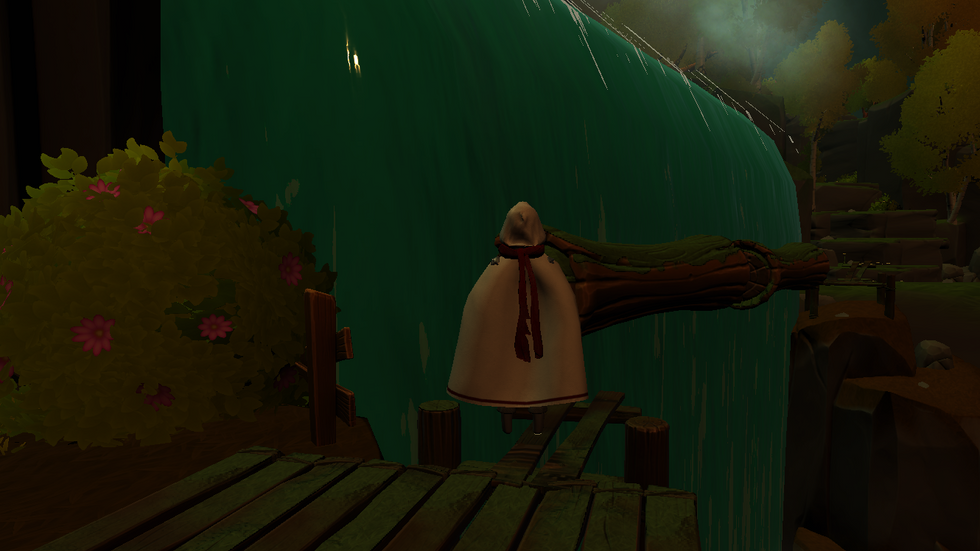Ignotus
Ignotus is Capstone project created over 8 months with a small 5 person team for the Honours Bachelor of Game Design program at Sheridan College. It is a 3D game created in Unity where a hooded protagonist uses a mystical "thermal energy transfer" power to solve logic puzzles, traverse hazardous areas, and restore life back to a deserted land. On this project, I was the main scripter and product owner.
Responsibilities
-
Led the design and implementation of player and camera scripts with an emphasis on responsiveness in a 3D puzzle-platforming game developed in Unity.
-
Created improvements to signature mechanic based on player feedback and data surrounding "readability".
-
Assisted other developers with programming fixes to UI, audio triggers, and level event scripts.
Player Controller
The controller for our game was created with the idea of the 3Cs: Character, Controls, Camera. As I championed this aspect of our game, I wanted the experience to be as smooth as possible for players, closely working with how the character, the camera, and the controls all feed into one another. We want all these systems to be smooth, snappy, and easy to understand for new players taking in our game.
For prototyping the look and feel of our controllers, I used A Hat In Time for reference. I really admire the way its controllers handle, even with simple movement. I regularly booted up the intro sequence and observed how the acceleration, jumping, and camera rotation all worked together in the first room of the game.
Early on, I prototyped various types of movement for the character, focusing on speeds, weight of the control, and snappiness of motion. I regularly got feedback from the team as I showed in progress GIFs and video breakdowns of the current state of movement and the possible ramifications to the future design of our levels should we choose one design over another.
In the end, it took three large implementations to get our controller working smoothly for the worlds we planned to create, and I continually tweaked Cinemachine cameras to amplify usability of our game's movement and playability.
Thermal Energy Mechanic
One of the unique aspects of our game is the "Thermal Energy Mechanic". One of the core pillars of our game was the idea that the player should be able to interact with the world and its object in a systemic way. The player should be able to interact with elements of the world and the elements should interact with each other and the player in unique ways based on the situation.
We liked the idea of energy transfer: taking a form of energy from one object and placing it on another. We prototyped several ideas, including altering an object's gravity, kinetic energy, thermal energy to affect its state of matter, "light" energy as a means of activating other objects, and more. The idea of thermal energy transfer stuck, though, as altering the thermal energy of objects created more unique opportunities for gameplay. By altering the physical form of the environment and experiencing how it reacts to players and other objects, we could create a variety of situations that would inspire thought and creativity in our players.
Communicating how our player was to use this power to traverse our levels was a challenge. Beyond just control, teaching our players how they could manipulate the environment to get past platforming puzzles was something we had to uncover ourselves. We assumed too eagerly that with a simple explanation of controls, our players would immediately adapt to the situations they found themselves in...
It's important to recognize what games of past and present do to teach us how to play. Even subtly, games use a variety of methods to explain our abilities, limits, and goals as players. Conveyance.
We learned how better to convey the player's abilities through improvements to various aspects of the game's presentation.
-
Level design guided the player through simple scenarios to enforce when and where they can use their abilities.
-
Game design reinforced what tools the players had at their disposal when coming across a boundary.
-
UI informed the player of changes to their state, the energy that they may (or may not) be carrying, and the state of objects they can interact with.
-
VFX delivered information to the player on how the energy transfers, how their actions manipulated the world, and how their own state changed.
-
Audio design provided additional context when using abilities to help a player realize how they changed the game world.
Piece by piece we helped the player understand more about how they interacted with the game and how the game interacted back. Various playtests, discussions, and prototypes were used to continually improve how we taught players.
In the end, we achieved our goal of limiting the friction that players had with our signature mechanic and could now provide them with the puzzle experience we wanted to deliver with far less confusion.







